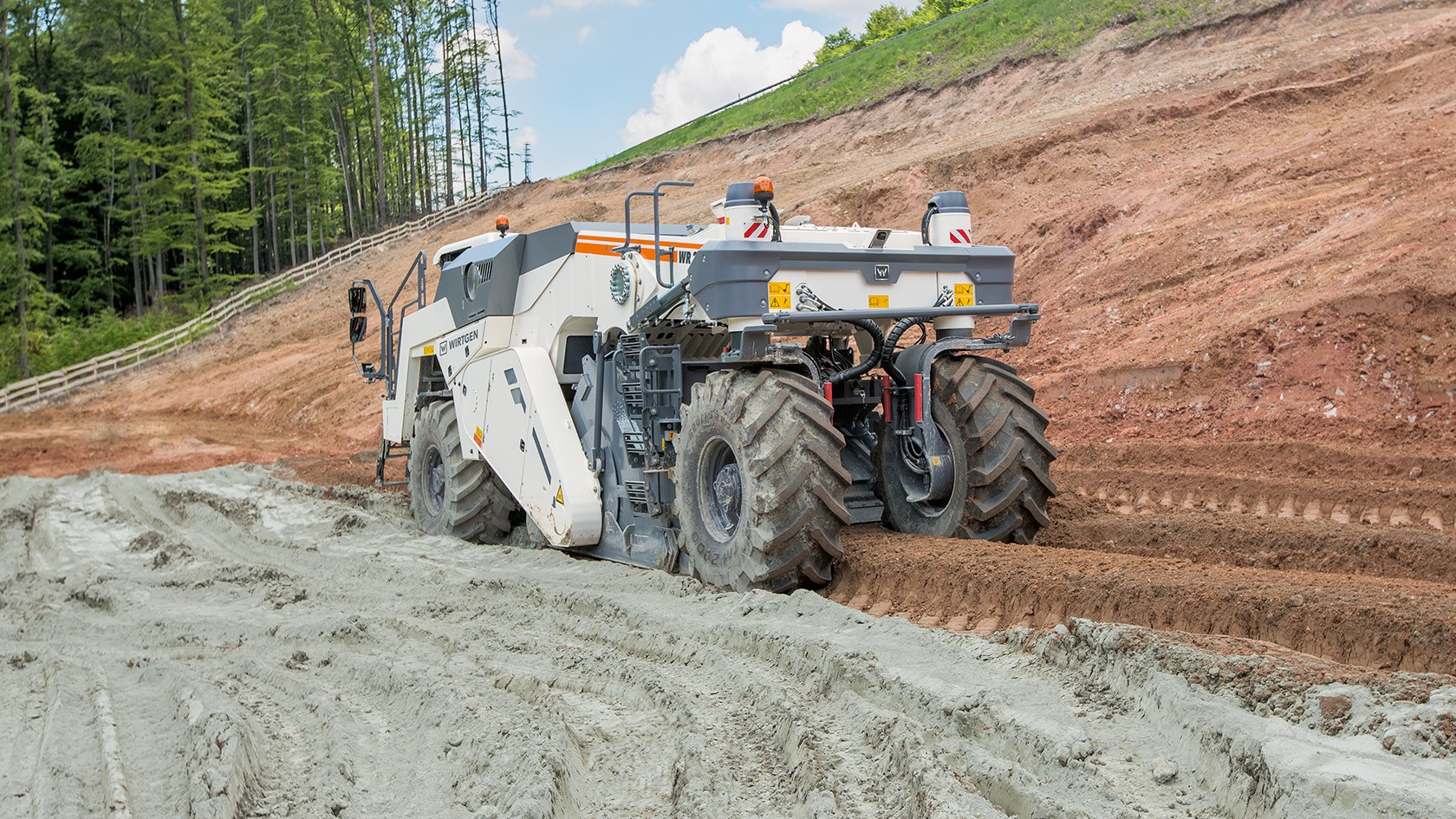The operating principle of soil stabilisation


Soil stabilisation scores top marks in comparison to soil exchange as it requires fewer truck transports, results in shorter construction times, saves resources and reduces CO2 emissions. When operating as a soil stabiliser, the WR uses its powerful milling and mixing rotor to mix pre-spread binders, such as lime or cement, into the existing, insufficiently stable soil at working depths of up to 560 mm to convert it into a construction material of high quality in an in-situ process. The resulting homogeneous soil-binder mixture offers high tensile strength, compressive strength and shear strength values as well as long-term water resistance, frost resistance and volume stability. Typical applications include the construction of paths, roads, motorways, foundations, parking lots, sports grounds, industrial parks or facilities, airports, embankments, backfills or landfills.
For homogenisation, the WR uses its powerful milling and mixing rotor to granulate and scarify the existing soil without added binders. The homogenised soil mixture is graded by a motor grader and then compacted by different HAMM rollers.
For soil stabilisation, binder is pre-spread in a first step by the all-wheel driven Streumaster. Following behind the binder spreader, the WR uses its powerful milling and mixing rotor to mix the existing soil and pre-spread binder. The resulting homogeneous soil mixture is graded by a motor grader and then compacted by different HAMM rollers.
For the production of a new cement-treated base layer, cement is pre-spread in a first step by a Streumaster towed spreader, which is followed by a water tanker truck. The WR then uses its powerful milling and mixing rotor to mix the existing material and pre-spread cement. Water is simultaneously injected into the mixing chamber via an injection bar. The resulting homogeneous base course material is graded by a John Deere motor grader and then compacted by different HAMM rollers.
The finely tiered WIRTGEN WR model series offers the perfect solution for each type of job in soil stabilisation and cold recycling.
To cold recycling